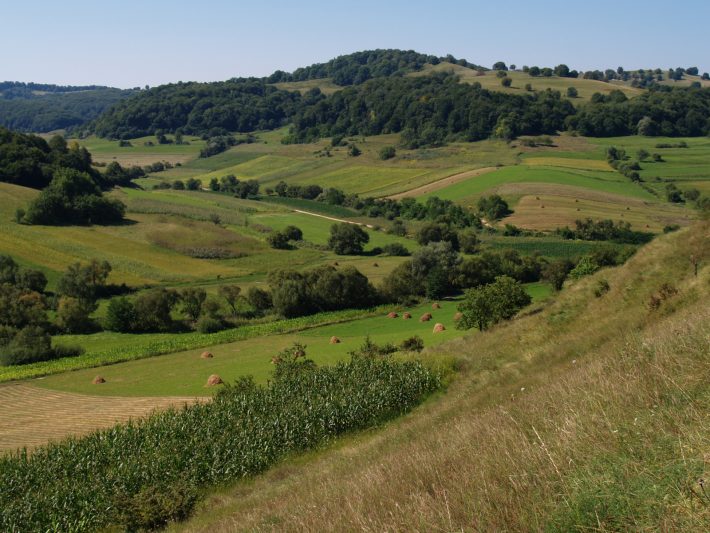Connecting Shared and Spared Land in the Agricultural Landscape
Can land-sharing and land-sparing be combined to meet food demands whilst conserving biodiversity?

Plenty of recent publications re-emphasize the need to halt current biodiversity loss, which in the last few decades has been happening at a significant rate and magnitude. Agriculture is the main driver of vanishing biodiversity, yet there remains a need to meet the food demands of an expanding human population. The debate of how to combine agriculture with conservation is a hot topic, both in science and in politics. In our recent “People and Nature” paper, we argue that land‐sparing (i.e. separating high‐yielding, intensively cultivated agriculture and spared habitat reserves), and land‐sharing (i.e. wildlife‐friendly farming), are both required in combination to address the tradeoff between food production and wildlife conservation in a multifunctional agricultural landscape.
The land sparing concept is often applied in the tropics to protect remnants of primary forests from human encroachment, limiting agriculture to already transformed areas. The land sharing approach is applied in landscapes that have been shaped by agricultural land use for millennia, such as in Central Europe where species are adapted to low-intensity, wildlife-friendly agriculture. Examples include birds, such as the white stork and the grey partridge, and mammals, such as the common hamster and the European hare. Further examples come from the hundreds of arable weeds that have become increasingly rare, alongside the endangered insects that rely on them. Conservation of these species is only possible in landscapes with a high proportion of wildlife-friendly farming. In return, many of these species provide ecosystem services that support agricultural production, including biological pest control, crop pollination and decomposition. However, most endangered species depend on spared habitat reserves, as many are not compatible with any form of agriculture.
Classical metapopulation theory suggests that survival of populations is driven by extinction and colonisation. Hence, facilitating connectivity between landscape elements is key for maintaining or restoring biodiversity and ecosystem services. Without habitat connectivity, extinction becomes the dominant process. This is why we need wildlife-friendly management, alongside protected areas, to avoid a hostile landscape matrix in areas where the land is intensively managed, preventing colonisation. In human-dominated landscapes, continuous spillover between patches of semi-natural habitats, farmland and protected reserves is presumably the only chance to sustain species-rich communities and their associated response diversity for long-lasting and resilient ecosystems in changing environments. The benefits of response diversity can be exemplified by wild bees, as bee species respond differently to temperature during foraging and during hibernation. Only a species-rich bee community is able to sustain pollination services under changing weather and climate.
Connected landscapes that combine land‐sharing and land‐sparing measures are needed for food production and to maximise the other ecological and societal benefits provided by agriculture. Small-scale landscape mosaics, including small and large habitat patches, grassland and cropland, at best grown in diversified and small fields, are the foundation of spatially well‐connected, permeable landscapes. This way, agriculture and biodiversity can coexist in what we call “land‐sharing/sparing connectivity landscapes”.
Paper Available Online:
Like what we stand for?
Support our mission and help develop the next generation of ecologists by donating to the British Ecological Society.